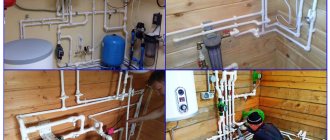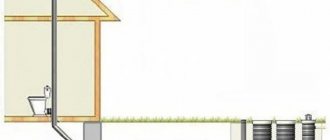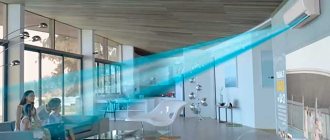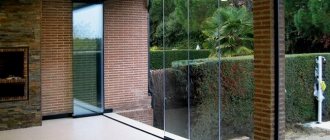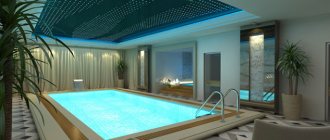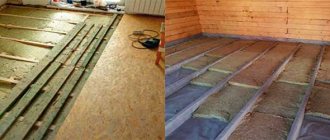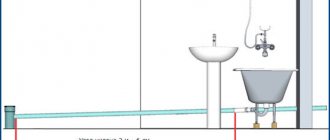Published: 02/3/2018 Category: Materials and technologies Views: 3450
Sewer pipes
Pipes are the basis of the sewer system. It depends on them how durable the sewage system will be. After all, no one wants to change or repair it every two or three years. If you buy good pipes, the sewer system will last for decades. In the article we will tell you how and which pipes to choose.
Three factors play a role in pipe selection: material, pipe location, and fittings. The material of the pipes determines their reliability and durability.
Depending on the location: for external and internal sewerage, the requirements differ. External sewerage - underground on the street. The inner half goes underground and half comes from toilets, sinks and showers throughout the house. The availability and range of fittings have a lesser influence on the choice of pipes, but they determine the ease of installation of the sewer system. Let's first consider two types of sewerage: internal and external.
External sewerage
Example of external sewerage
The external sewer system runs underground on the street and carries wastewater to the septic tank. Pipes for external sewerage can withstand static and dynamic loads:
- soil pressure,
- movement of people
- traffic,
- groundwater movement,
- temperature changes,
- humid environment,
- aggressive environments.
Dynamic loads. These are all variable loads: movement of cars and people, movement of groundwater. Pipes with high ring stiffness can withstand dynamic loads well.
Static loads. These are loads that constantly put pressure on the pipeline: soil pressure. Products with high ring rigidity also resist pressure well. Static loads also include others; we will consider them separately.
Temperature changes. The most dangerous are cold snaps, since many pipes can withstand 30-degree heat, but cannot cope with 30-degree frost. Therefore, sewerage pipes are placed below the freezing level of the soil and are made frost-resistant. The freezing level is different for each region. For the Leningrad region, for example, 1.16−1.71 meters - depending on the type of soil.
Wet environments. High humidity in spring and autumn destroys ferrous metals without anti-corrosion coating and some other materials. Groundwater movement can dislodge the pipeline if it is not installed correctly.
Aggressive environments. These are acids, salts and alkalis that are found in soil and wastewater. Therefore, pipes inside and outside must be resistant to various substances.
Connection methods
Depending on the type of sewer pipe selected and connecting fittings, the following connections are classified:
- Bell-shaped - the pipe socket is put on a fitting or other part. Fixed with an O-ring. For socket joints of cast iron pipes, cement is used instead of an O-ring;
- For gluing (usually used for assemblies made of plastic pipes). The installation adhesive is made from a mixture of PVC and tetrahydrofuran;
- Using clamps and levers. This method allows you to increase the mechanical force;
- Threaded. Quite rarely used to connect cast iron parts.
The connection method should be carefully considered - the operation of the entire network depends on the correct connection of the nodes.
Internal sewerage
Internal sewer outlet
Internal sewerage runs in the house itself and is connected to the external one under or through the foundation. For the internal pipeline, rigidity is not so important; the load on it is several times less. But other general requirements remain:
- durability,
- easy replacement,
- soundproofing,
- ease of installation,
- non-toxic,
- smoothness of the inner surface.
Durability. Nobody wants to change the pipeline every two or three years. Especially when there are materials with a service life of 50 years or more.
Easy replacement. To replace old sewers, major repairs are carried out. It is better if the pipeline can be easily replaced in case of breakdown.
Soundproofing. Pipes for internal sewerage must isolate the sounds of sewage movement from the inhabitants of the house.
Ease of installation. Some plastic pipes can be easily installed by a non-professional. The easier the installation, the faster the sewer construction takes place.
Non-toxic. Pipes must be non-toxic and not release toxic substances upon contact with wastewater.
Smooth inner surface. The sewer will silt and become clogged if the inner walls of the pipes are rough.
In addition, the internal and external water pipes must be easily connected to each other. If they do not connect well, the joint between them will become clogged or leak. This is especially important when partially replacing the pipeline.
Go ahead. Let's consider which pipes are most suitable for sewer systems :
- PVC pipes,
- PE pipes,
- PP pipes,
- asbestos-cement,
- concrete,
- cast iron,
- ceramic.
No. 1. Material of internal sewer pipes
Internal sewerage can be done using the following pipes:
- cast iron. Previously they were installed everywhere, but today they are practically not used;
- polyvinyl chloride (PVC);
- polypropylene. Looking ahead, we note that this is the most optimal option;
- polyethylene. Infrequently used;
- steel and copper. Expensive pipes that are not used, but are sometimes still used due to their appearance.
Despite the fact that polypropylene and PVC pipes are most widespread, when choosing, do not rush to immediately discard the other options, since in some cases cast iron and even copper pipes may be useful.
PVC pipes
PVC or uPVC - polyvinyl chloride, a new polymer material. PVC pipes are lightweight, environmentally neutral and easy to install.
PVC sewer pipe
Advantages:
- long service life,
- no overgrowth,
- resistance to acids,
- wear resistance,
- ease.
Flaws:
- inoperability at temperatures below −10°C,
- deform (elongate) at temperatures above 60°C.
Gray PVC pipes are excellent for indoor sewerage , where they are used. Red PVC pipes for sewerage with hardness SN-4 and higher can be used for external pipelines. To connect, the pipes are inserted into each other: at one end of the pipe there is a socket with a rubber ring, and at the other there is a chamfer that is tightly inserted into this socket. The inner surface of PVC pipes is perfectly smooth, so they rarely become clogged or overgrown.
Such pipes should be buried deeply, otherwise they will freeze. Also, you should not drain liquids with a temperature above 60°C through them for more than a minute. For a short time they can withstand temperatures exceeding 95°C.
PE pipes KORSIS and KORSIS Eco
Polyethylene is another polymer. KORSIS and KORSIS Eco pipes are made of high-density polyethylene (HDP) and an external corrugated layer is added. It increases ring rigidity, so the products are suitable for external sewerage.
Polyethylene pipes KORSIS
Advantages:
- durability,
- ease,
- elasticity,
- frost resistance down to −60°C,
- resistance to acids and alkalis,
- soundproofing,
- polished inner surface.
Flaws:
- sensitivity to sunlight,
- maximum temperature of the transported substance: 80°C.
Pipes made of high-density polyethylene, unlike PVC, tolerate low temperatures. At the same time, they are also lightweight, elastic and more reliable for external pipelines.
sells polymer pipes made of PVC and high-density polyethylene. SIS is the official distributor of the Poliplastik Group, a manufacturer of plastic pipes for sewerage, water supply, and heating. SIS sells products from the Polyplastic Group at prices from the manufacturer, and also helps you choose material for pipelines.
PP pipes
Polypropylene or PP pipes are also a new plastic building material with high strength values.
Polypropylene pipe for internal sewerage
Advantages:
- resistance to high and low temperatures,
- durability,
- ease,
- resistance to acids and alkalis,
- strength,
- ease of installation.
Flaws:
- instability to temperatures above 80°C.
The disadvantages of PP pipes relate to temperatures above 95°C and work with fire-hazardous objects. High temperatures have a bad effect on polypropylene, as well as on other polymer materials. In general, this material is excellent for any sewer systems. PP pipes are used for storm drainage, in private houses and apartment buildings due to their strength and wear resistance.
Popular model: EKODIN 5
up to 5 people
recycling 1 cubic m. per day.
Max. dump 250 l.
Check prices
Your own home surrounded by nature, as an ecologically clean area, can be an ideal place to live. But this is only possible with careful preparation of all the necessary elements of comfort, which include sewerage.
You don't notice it when it is installed according to all the rules. But at the slightest violation, it can remind itself of itself with leaks and an unpleasant odor.
The most important task when installing a sewer system is the correct choice of pipes, the properties of which determine the final result of the work. On this specific issue, let us turn to the experience of specialists.
Asbestos cement pipes
Asbestos-cement pipes are durable, which is why sewer pipelines are made from them. Cement and asbestos fiber are not destroyed by rot, acids or corrosion.
Asbestos-cement pipes in a storm sewer system
Advantages:
- cheapness,
- durability,
- resistance to acids, alkalis, aggressive environments,
- strength,
- ease of installation,
- resistance to clogging.
Flaws:
- fragility, instability to mechanical stress,
- harm to people and the environment.
Given their low cost and durability, asbestos-cement pipes are not the best option. They are more difficult to transport and install than polyplastic - the weight is higher than that of polymers. Also, asbestos cement crumbles at the edges, which is why the tightness is compromised if the connections are incorrect or of poor quality. The most dangerous, especially for internal connections: the environmental damage of asbestos concrete. Asbestos releases carcinogens; it is dangerous to work with and live near it.
Rating of vent pipe manufacturers
| Photo | Name | Rating | Price | |
| #1 | Rehau | ⭐ 4.95 / 5 2 - votes | Find out the price | |
| #2 | Ostendorf | ⭐ 4.9 / 5 4 - votes | Find out the price | |
| #3 | Hemkor | ⭐ 4.85 / 5 | Find out the price | |
| #4 | Politek | ⭐ 4.8 / 5 2 - votes | Find out the price | |
| #5 | Sinicon | ⭐ 4.75 / 5 1 - voice | Find out the price | |
| #6 | Wavin | ⭐ 4.7 / 5 | Find out the price |
What would you choose or recommend?
Take the survey
In this list, we propose to get acquainted with the best manufacturers of sewer pipes that can be found on the Russian market. They all produce reliable products, and it’s up to you to decide which one to choose.
No. 1 – Rehau
Rehau sewerage pipes
The Rehau brand is known to everyone who has faced such tasks as repair and construction. He has a huge range of all kinds of products, including fan pipes for both non-residential premises and residential buildings. The pipes are made of polymer, have three reliable layers and are also reinforced in the area of bends and turns. They are reliable and durable, and perfectly absorb noise. The first inner layer is protected from corrosion, the second has additional mineral reinforcement, and the third is designed to easily withstand vibration and shock. The very first layer, by the way, is quite smooth, and no deposits form on it. The products can be installed in almost any conditions, even laid outside. In general, pipes from this brand are very resistant to thermal and chemical influences, they are practical and can be used not only in ordinary cases, but also where networks have a special purpose. And we must pay tribute - their prices are quite reasonable.
pros
- service life up to 50 years
- suitable for use in networks for various purposes
- three-layer polymer
- excellent sound absorption
- ease of installation
- resistance to thermal and chemical influences
- moderate cost
Minuses
- not detected
Prices for sewerage pipes Rehau
sewer pipes Rehau
Reviews of Rehau sewer pipes
No. 2 - Ostendorf
Ostendorf sewer pipes
This is a German manufacturer, widely known throughout the world, including in Russia. It produces pipes made of polypropylene, but not ordinary, but mineralized, which is of high quality. The material absorbs sound well, which means the buyer will hear almost no water noise. Pipes from this manufacturer are designed for installation of an internal drainage system, but can be easily combined with a wide variety of sewage systems. One of the main advantages is the presence of a convenient scale directly on the product, which will allow you to measure the desired length without difficulty, which speeds up and facilitates installation. And the pipes themselves are quite light, which also gives +100 to the ease of performing the work. The manufacturer reports that its products can last up to 100 years without complaints. They are not afraid even of high temperatures, do not rust, and are not afraid of aggressive chemical influences. In addition, they are environmentally friendly and safe and are even suitable for recycling. Perhaps these fan pipes are considered the most popular in Russia, despite the rather high cost.
pros
- very durable
- muffle sounds
- durable
- resistant to various types of impact
- ease of installation
- environmental friendliness
Minuses
- high price
Prices for sewerage pipes Ostendorf
sewerage pipes Ostendorf
No. 3 - Hemkor
Sewage pipes Hemkor
Manufacturer from Russia, producing inexpensive and reliable PVC pipes. Moreover, during production a special technology is used that allows the formation of an internal foam layer. Thanks to this, the pipes are 33% lighter than their analogues. Products from the range are suitable both for arranging sewerage systems inside and outside the house. There are also options that are used for wells and pressure water supply systems. Hemcor products can withstand high pressure and are suitable for use in difficult conditions - at elevated temperatures for a long time. They are inexpensive, resistant to exposure to various chemicals, hygienic and easy to install (due to their low weight). They are very hygienic and do not contribute to the formation of dirt deposits on the walls.
pros
- withstand high pressure
- low price
- heat resistant
- hygienic
- lungs
- large assortment from the manufacturer
Minuses
- not detected
Prices for sewer pipes Hemkor
Hemkor sewer pipes
No. 4 - Politek
Sewage pipes Politek
A manufacturing company from Russia, well known in the market for its polypropylene pipes and fan products made strictly in accordance with GOST. The products are used for arranging drainage in internal or external systems, suitable for residential buildings, administrative and even industrial buildings. The material from which these lightweight pipes are made offers excellent resistance to both fecal and waste water. Pipes from this company are reliable, smooth on the inside and do not contribute to the appearance of dirt accumulations, do not heat up, are easy to install and can withstand high temperatures of up to 100 degrees, although only for a short time. The declared service life is about 50 years. It is only important to remember that using these products at temperatures below -10 degrees is prohibited - the material quickly loses its properties and the pipes may be damaged. But at temperatures down to -10 they can be used - after more favorable conditions return, the pipe material quickly restores its shape.
pros
- reliability of connections
- don't get clogged
- easy to install
- withstands heating up to +100 degrees, although not for long
- resistant to chemicals
- durable
- stronger than metal-plastic
Minuses
- cannot withstand very low temperatures
Prices for sewerage pipes Politek
sewer pipes Politek
Reviews of sewerage pipes Politek
No. 5 – Sinikon
Sinicon sewerage pipes
are a Russian-Italian brand whose products skillfully combine moderate cost and European quality. It produces polypropylene fan pipes and various components for them. The brand's products are very popular in Russia, because they are characterized by a long service life - up to 50 years. The pipes can withstand strong heat very well - wastewater with temperatures up to +95 degrees will definitely not harm the material and will not cause leaks. The products are not afraid of chemical components, even quite aggressive ones - they do not crack or collapse even after a long time, and can be used at a pH level in the range of 2-12. The inside of the pipes is very smooth, and dirt does not settle on them. And yes, they absorb noise well, making them ideal for use in apartment buildings. But, alas, these pipes are prohibited from being used to drain industrial wastewater without first checking for stability.
pros
- absorb noise
- are not afraid of chemical exposure
- very heat resistant
- European quality level
- relatively long service life
- environmentally friendly
Minuses
- pipes cannot be used for industrial wastewater
Prices for sewer pipes Sinicon
Sinicon sewer pipes
No. 6 – Wavin
Wavin sewerage pipes
are a Dutch brand that entered the market in the mid-50s of the last century. Its founder once wondered how to get rid of rusting pipes. And he set himself the task of solving this problem by developing a new communications system. Since then, the brand has been producing reliable plastic pipes for drinking water and plastic pipes for drains, which have become very popular. The brand's enterprises are now located throughout Europe. The pipes that the company produces are used for the construction of internal sewerage systems; they are made from PP and PVC. Easy to install due to simple connections and ideal geometry, withstanding high heating temperatures, with a long service life of up to 50 years, these products are in demand all over the world, including in Russia. The main disadvantage is that these pipes are not always easy to find for sale in regular stores.
pros
- low roughness coefficient
- the company has been on the market for many years
- durability of use
- heat resistance
- perfect geometry
- ease of installation
Minuses
- hard to find on sale
Prices for sewerage pipes Wavin
Wavin sewerage pipes
Concrete and reinforced concrete pipes
This is heavy artillery. This sewage material is used in industrial buildings: factories or wastewater treatment plants.
Septic tank made of concrete rings
Advantages:
- resistance to mechanical loads,
- durability,
- resistance to corrosion,
- cheapness.
Flaws:
- heavy weight,
- complexity of installation,
- rough inner surface.
Concrete is a cheap, durable and sustainable material. But using it for the construction of a private home sewer system is unjustified: it is unlikely that there will be such high loads there, except perhaps for organizing a septic tank. But transportation and installation of pipes will be expensive and take a long time. For example, the installation site is prepared: the soil is additionally compacted. Concrete and reinforced concrete are suitable for the construction of septic tanks. Concrete rings are strong and durable, so the septic tank most likely will not have to be replaced for several decades.
Cast iron pipes
Cast iron pipes are divided into gray cast iron and ductile iron materials. Gray cast iron does not resist dynamic loads well: for example, cars passing over a sewer line. Malleable cast iron perfectly withstands any load and, unlike other ferrous metals, does not rust.
Old cast iron sewer pipes
Advantages:
- high strength,
- durability,
- resistance to low and high temperatures,
- simple installation,
- corrosion resistance.
Flaws:
- heavy weight,
- roughness of internal surfaces,
- instability to salts and saline solutions,
- high price.
To bring and install cast iron pipes you will need special equipment. The costs of the material itself add up to the costs of building a sewer system. However, after installation, the sewerage system does not guarantee a long period of flawless operation due to the possibility of silting.
How deep should sewer pipes be buried?
SNiP 2.01.01.82 contains data on the depth of soil freezing in various climatic zones. According to SNiP, the pipe exit from the house should be 30 cm above the average freezing depth. The depth of the sewer system should not be less than 70 cm, although in most regions the pipes are buried to a depth of at least 1.5 m. Installation of sewer pipes in a country house is, on average, carried out at a depth of 1.0 m from the soil surface. According to experts, such a foundation is quite sufficient for reliable operation of the sewerage system.
A prerequisite for sewer installation is the correct slopes - only in this case will it not freeze and become clogged.
Ceramic pipes
This is the most ancient material of all, which is gradually being used less and less.
Old ceramic sewer pipes
Advantages:
- neutrality to chemicals,
- smooth inner surface,
- resistance to temperature changes,
- easy installation.
Flaws:
- fragility,
- short length of one pipe.
Ceramic products used to be excellent for sewerage. But now many other materials that are lighter or stronger have similar properties.
Video description
The plastic variety (Russian name - PE, international - PE), is widely used in external drainage systems:
PVC pipes
Polyvinyl chloride sewer pipes (PVC in international transcription) are mainly used for arranging sewer systems in residential buildings. Among the advantages of such products are:
- long-term operational period (40-50 years);
- reduced flammability and ultraviolet resistance;
- resistance to corrosion and clogging;
- light weight and easy installation (easy to cut and bend).
Smooth PVC pipes are used where there is no heavy load on the ground Source yandex.by
When using, it is necessary to take into account some features of the products:
- The disadvantage that limits the use of PVC pipes is the high coefficient of thermal expansion (change in linear size under the influence of temperature). If the liquid is heated to 60°C or higher, the tightness of the joints decreases, which can lead to leakage.
- The plasticity of the material decreases at low temperatures. Operation of the pipeline without insulation is allowed in the range from 0 to -15°C.
Fitting
Fittings also influence the choice of pipes for sewerage, although to a lesser extent. Fittings are pipeline connecting parts that allow you to branch, close, or direct pipes in another direction.
Plastic sewer fittings for interior work
The most common fittings are for plastic pipes. They are made from the same polymers: PVC, PP, PE - they have different diameters and sizes and are easy to install. The range of metal fittings is more modest. They are just as easy to install, but the parts themselves and their sizes are smaller. The same goes for ceramic fittings. For other types of pipes, fittings are not sold at all; they are connected differently. In terms of fittings, polymer pipes are better for sewerage.
How to choose the right diameter?
But now it’s time to figure out the most important thing - how to choose the right diameters for the external and internal networks?
There are 2 methods - non-calculated (according to SNiP) and calculated.
- Non-settlement method:
According to GOST No. 21.604 “Water supply and sewerage”, for laying internal sewerage it is necessary to use the following sizes of plastic pipes:
- bathtub drain pipe - diameter (d) = 40 mm;
- shower - d=40 mm;
- toilet -d=110-150mm mm;
- sink -d=40 mm;
- bidet —d=40 mm;
- sink, washbasin -d=40 mm;
- combined drain for shower, sink and bath—d=50 mm (
- central riser - d= 110 mm;
- bends from the central riser d=60 mm.
In addition to the pipe diameter, it is necessary to select the correct slope.
- Calculation method:
SNiP 2.04.01-85 describes methods for calculating diameters for sewerage in an apartment and a private house. They are complex, taking into account the slope of the pipeline on horizontal sections of the main line, the angle of connection of the leads and other nuances.
To calculate the outer diameter of a sewer pipe, there is a special formula:
D = V ( √ h / d) ≥ K, where:
- D—pipe outer diameter
- V is the speed of movement of wastewater (must be at least 0.7 m/s);
- K is a coefficient depending on the type of material (selected according to SNiP);
- h/d - pipeline filling indicator - the ratio of the flow height h (maximum) to the internal diameter less than 0.6. If clean wastewater moves through the pipeline, this value can reach 0.8
Advice: You should not do the calculations yourself, the probability of error is too high. Use the services of a professional.
Smallest permissible pipe diameters:
- For external networks inside the block −150mm;
- For external street network - 200mm;
- For an external stormwater drainage network −220mm;
- For pressure networks - 150mm.
When constructing a private residential building, the internal diameters are taken from SNiPs or calculated based on all the parameters listed above. For an external network, in any case, a pipe of 150mm-200mm will be sufficient.
Correspondence between the diameter of the pipe and the plumbing fixture (toilet, sink, etc.)
The size of the sewer pipe does not always correspond to the size of the pipes of the plumbing fixtures. For example, the sink corrugation usually has a diameter of 30mm, and the waste pipe has a diameter of 50mm. What to do?
The answer is simple - you need to use connecting fittings.
Connecting elements
The range of fittings is very wide. They are made of cast iron, PVC, polyethylene, polypropylene, as well as the pipes themselves.
When installing pressure systems, tees, bends, pipes, sockets (double and single), O-rings, and saddles are used.
Plastic types of fittings are distinguished by their light weight, long service life, resistance to temperature fluctuations and a wide range of types.
Let's look at some types of shaped products:
- Tee - used to connect 2 or more pipes at an angle of 45, 60, 90 degrees;
- Coupling - connects two parallel sections of the pipeline;
- Retraction - allows you to rotate 90 degrees when laying;
- Reduction - connects two different diameters and materials;
- Cross - performs perpendicular branches;
- Branch pipe - used when replacing a damaged or cut section of a pipeline;
- Plug - blocks the movement of fluid during repairs.
Summarize
Materials for sewer construction have many similar characteristics: immunity to aggressive environments, relative smoothness inside, strength. But at the same time, plastic pipes are always light and, in addition, elastic. Installation and docking are simplified. At the same time, pipes made of different plastics are easily connected to each other. Therefore, internal and external sewerage can be made from different, most suitable polymers. It is obvious that plastic pipelines are the future for both internal and external sewage systems.
These articles may also be of interest to you:
- Soldering copper pipes. Soldering restoration
- Plumber tools for soldering copper pipes
- Cold welding - eliminating pipe leaks without welding
- Selection and installation of a drainage system
Which material should you choose?
Since in the article we are considering the question of which pipes are better than a private house, we will summarize what to choose.
- Concrete and reinforced concrete - used in industrial construction. Local sewer networks are constructed from them. They differ in significant weight and dimensions.
- Cast iron is high-strength, temperature-resistant, but heavy. Now they are not used often. Even in multi-apartment construction, the volume of their use is decreasing. Even despite the long service life.
- Steel, ceramic and copper are too expensive and not very reliable for use in sewers. The installation and replacement process is complex.
- Asbestos-cement - resistant to biological and chemical influences. Quite suitable for sewer networks. However, fragility reduces their performance even before installation.
- Polymers are a relatively new type of product. There are models with different consumer characteristics. The class includes various plastic pipes for sewer networks. They are distinguished by significant strength, long service life, ease of installation and compatibility with other equipment.
- PVC pipes are the best choice for gravity sewerage. Suitable for installation of external and internal systems. Resistant to mechanical damage and ultraviolet radiation. Temperature does not affect performance. They do not tolerate exposure to household chemicals very well.
- Polypropylene - not exposed to aggressive chemicals. Resistant to mechanical damage. Capable of passing high temperature liquids.
The sewer pipe market is much broader than described in the article. Here are the characteristics of the most common materials. It is impossible to say for sure that one of the options is better than the others. For each pipeline, specific operating conditions must be taken into account. It is by taking into account all the nuances of the site that you can choose the best option.
We recommend reading:
- How to connect plastic sewer pipes;
- How to independently determine the diameter of the pipe;
- Methods for connecting a metal pipe to a plastic one

